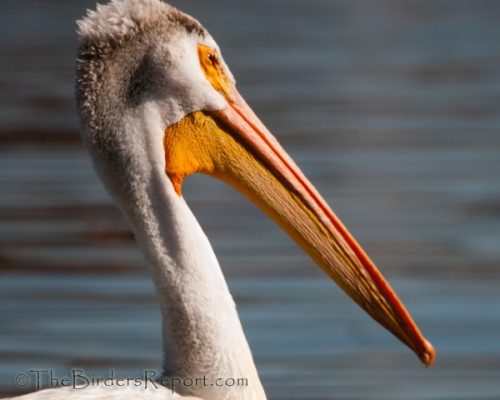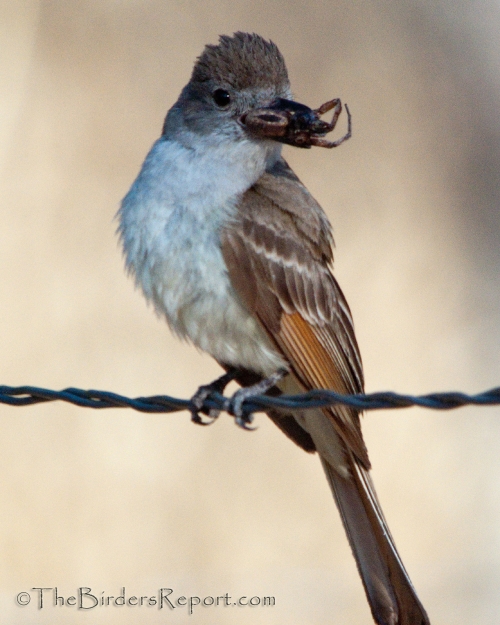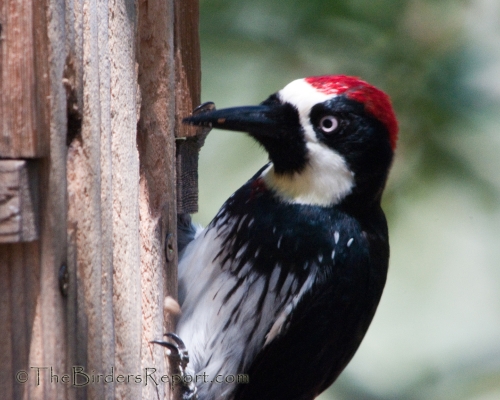 American White Pelican (Pelecanus erythrorhynchos) photo by Larry Jordan
American White Pelican (Pelecanus erythrorhynchos) photo by Larry Jordan
Check out my latest West Coast Beat Writer post on the American White Pelican over at 10000 Birds!
 American White Pelican (Pelecanus erythrorhynchos) photo by Larry Jordan
American White Pelican (Pelecanus erythrorhynchos) photo by Larry Jordan
Check out my latest West Coast Beat Writer post on the American White Pelican over at 10000 Birds!
 Ash-throated Flycatcher (Myiarchus cinerascens) photos by Larry Jordan
Ash-throated Flycatcher (Myiarchus cinerascens) photos by Larry Jordan
One of my favorite western cavity nesting birds is the Ash-throated Flycatcher (Myiarchus cinerascens). By the end of this post I think you will know why (click on photos for full sized images). But wait, there’s more
 Great Blue Heron (Ardea herodias) Juvenile photos by Larry Jordan
Great Blue Heron (Ardea herodias) Juvenile photos by Larry Jordan
I went over to my friends Norm and Chris’ house the other day to see their new group of nesting Green Herons (all of that in a future post). They have three Green Herons nesting in their yard! Yes, pretty amazing I must admit. I will bring you the whole story soon, but until then I wanted to share these shots of a juvenile Great Blue Heron (Ardea herodias) I encoutered at Mary Lake after leaving the nesting Green Herons. But wait, there’s more
 Acorn Woodpecker (Melanerpes formicivorus) Male photos by Larry Jordan
Acorn Woodpecker (Melanerpes formicivorus) Male photos by Larry Jordan
Saturday I had some time to just relax and watch the clown-faced member of the woodpecker family, the Acorn Woodpecker (Melanerpes formicivorus), as the adults brought their juveniles to the feeder (click on photos for full sized images).
It is fitting that they sport the clown face too because they really put on a show chasing each other around through the trees and around the woodpecker feeder.
This first video begins with a juvenile male at the feeder as he goes about eating some smaller seeds and discarding others as he searches for the larger nuts in the mix, followed by what appears to be an adult male and then an adult female who goes through some contortions to get what she wants.
This is a close up of the male Acorn Woodpecker showing the light colored iris and bright red crown of the adult bird. This particular male is one of the few having a small red spot below his throat on his breast.
The female has a broad black stripe separating her bright red crown from her white forehead.
Here is a close up of the contortion maneuver she used to extract her treasure from the feeder.
The difference in magnification from the first video to this second video and the photos is the difference between my 400mm lens and the digiscope setup.
This video includes a close up of the juvenile male and you can also hear the “laughing” call of the Acorn Woodpecker near the beginning.
I hope you enjoyed watching them as much as I did!
To see more great bird photography, check out Bird Photography Weekly!
Social Media Connect